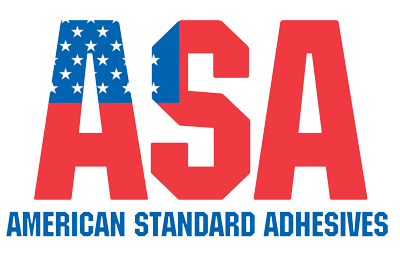The correct temperature for our hot melt is 350º F in the glue pot, hoses, and nozzles. It is always good practice to research the TDS(Technical Data Sheet) of a product before use.
This usually occurs as a result of the hotmelt being set at too cold a temperature. When this happens, you may notice that it will set up quickly, giving it the angel hair effect. You should always pay attention to the temperature to ensure it is high enough in the glue gun and hoses, as well the amount of glue you are applying.
Yes, we offer a variety of adhesives for many different substrates. Recycled paper used on corrugated boxes may shorten the fibers which makes it difficult to adhere to. There are a number of variables to consider when choosing the right glue. One of which is that the presence of any coating can change the chemical composition of the glue itself.
Feel free to reach out and let us know what substrates you are using and whether you are changing your box supplier. We can run the relevant tests in our lab to ensure you are using the right product.
There are various reasons why your glue may not be performing the way it should, including the material supplier and the temperature settings. You must consider all of the variables to determine the reasons for your challenges.
Yes, we offer a variety of products including those for boxes being stored in cold environments or warm temperatures. The area of storage will greatly affect your choice of product. Some of our adhesives can work with any temperature.
Unfortunately, adding more hotmelt in an application will only increase the drying time of the adhesive. The correct thing would be to examine your glue beads and ensure you are applying the right amount for the specific application. You should also check your compression rollers or mandrel.
Generally, the best way to know how much glue to use for a specific application is to thin out the glue when applying, and then gradually increase the amount until you don’t see any more pop-opens. Not only does this ensure you are using the correct amount, but it will help you use less glue and save money.
Yes, the majority of ASA products are formulated to be FDA approved for indirect contact with food and beverages. All of them meet their related FDA standards. Are you looking for an adhesive that is safe for indirect contact with food? Get in touch with us to learn more about how we can help you.
The answer to this is highly relative as it depends on the type of application. Generally, both of these adhesives have great features, however with Hybrid Metallocene being a new and improved technology, it has increased efficiency for industrial applications.
Metallocene-based hotmelts are known to be cleaner, and may help you to save money on equipment maintenance. Additionally, they are lower in density compared to EVA hotmelts. They also adhere to a wide range of environmental temperatures and have good pot stability as well as heat resistance which are key considerations for bonding.
If you are using difficult coatings or substrates, EVA hotmelts may be a better option. A healthy cleaning schedule will allow you to easily maintain your equipment and save money from buying replacement parts. Ultimately, the choice of hot melt highly depends on the nature of your application. While one may work best in some cases, it may not in others. We advise you to keep an open mind and consider all the factors surrounding your needs and requirements before making a choice.
Unfortunately, adding more hotmelt in an application will only increase the drying time of the adhesive. The correct thing would be to examine your glue beads and ensure you are applying the right amount for the specific application. You should also check your compression rollers or mandrel.
Generally, the best way to know how much glue to use for a specific application is to thin out the glue when applying, and then gradually increase the amount until you don’t see any more pop-opens. Not only does this ensure you are using the correct amount, but it will help you use less glue and save money.
Yes, the majority of ASA products are formulated to be FDA approved for indirect contact with food and beverages. All of them meet their related FDA standards. Are you looking for an adhesive that is safe for indirect contact with food? Get in touch with us to learn more about how we can help you.
The answer to this is highly relative as it depends on the type of application. Generally, both of these adhesives have great features, however with Hybrid Metallocene being a new and improved technology, it has increased efficiency for industrial applications.
Metallocene-based hotmelts are known to be cleaner, and may help you to save money on equipment maintenance. Additionally, they are lower in density compared to EVA hotmelts. They also adhere to a wide range of environmental temperatures and have good pot stability as well as heat resistance which are key considerations for bonding.
If you are using difficult coatings or substrates, EVA hotmelts may be a better option. A healthy cleaning schedule will allow you to easily maintain your equipment and save money from buying replacement parts. Ultimately, the choice of hot melt highly depends on the nature of your application. While one may work best in some cases, it may not in others. We advise you to keep an open mind and consider all the factors surrounding your needs and requirements before making a choice.
Ask Our
Solutions Expert
Solutions Expert
We’re here to help to your bonding needs.

